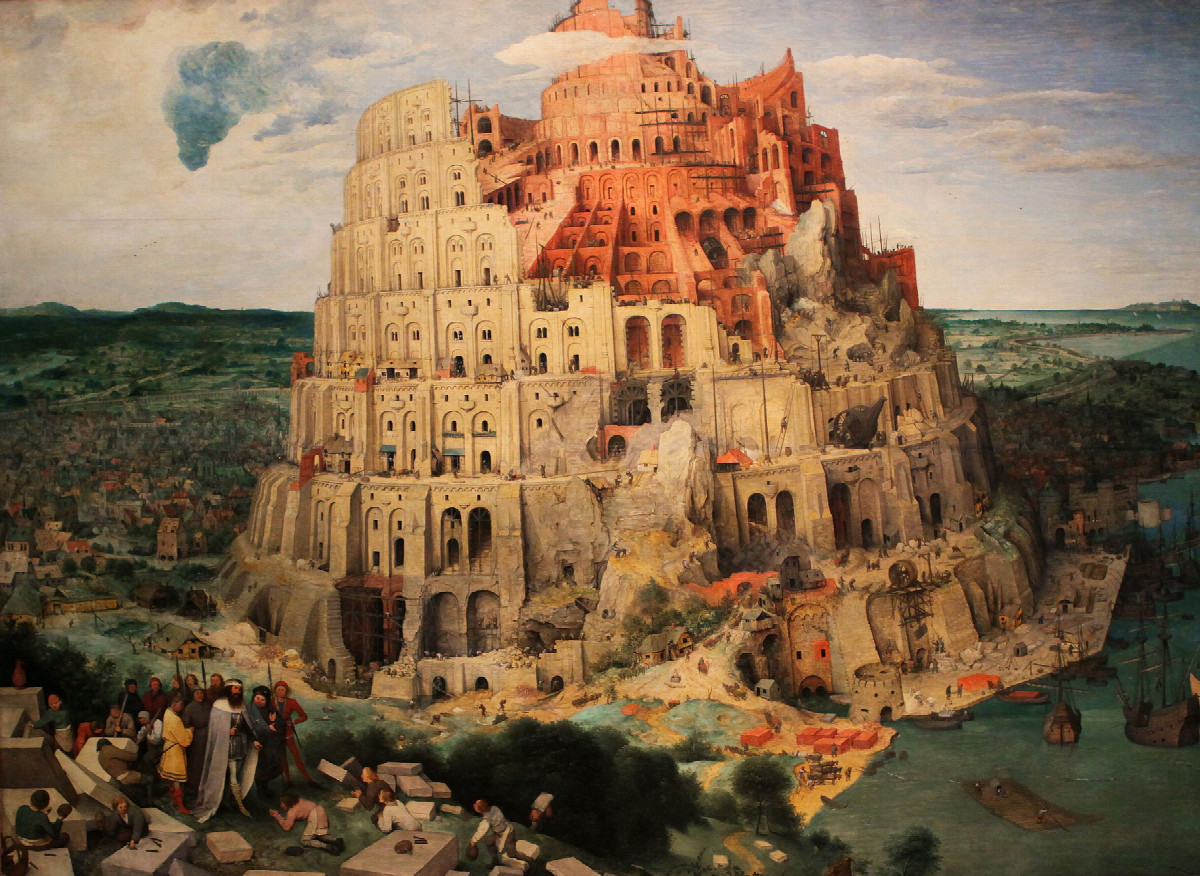Pieter Bruegel the Elder was a 16th century Dutch painter who specialised in large communal and landscape paintings. Many moderns like us probably know him through The Tower of Babel which has been the go-to image for book editors looking for cover art. The theme is of course based on the biblical tale that tells the story of the folly of human vanity so disproportionately out of scale. It is forgivable to be so mesmerised by the intricate structure of the tower, that the tiny characters at the bottom of the painting often go unnoticed: the king overseeing the construction of the ground, the silhouette of bricklayers hanging on the tower, without any of them being aware of each other. Such ventures are yet another symbol of the vanity of earthly beings, who have constructed something whose very enormity engulfs themselves. Desire that goes unchecked ultimately creates an inhuman world.
The Tower of Babel is however not a very typical representation of Bruegel’s prolific works. Known as the “Peasant Bruegel”, he is most adept at portraits of the peasant crowds. What is special about Bruegel is that he used techniques and layouts usually utilised in landscape paintings to depict peasant scenes. Hunters in the Snow, which was completed in 1565, epitomised this point. The line of sight of the painting begins from the returning hunters and their dogs walking from the wild towards the village. The vast winterly landscape ensconced the village already whitened by snow. In their winter break outside, the villagers look like tiny ants from afar, who for some reason did not stay indoors, probably because they were waiting for the hunters, and this added a touch of human warmth amidst the cold. In Brueghel’s times, the Netherlands and Flanders (the Dutch-speaking region where Brueghel was from before it became independent from Belgium) were in the throes of religious wars. A picture of a harmonious small village surrounded by an icy world have been symbolically charged.

Like many of his paintings, Hunters in the Snow conveys an image of countryside communities where the indoors and outdoors are not strictly separated. Villagers are working or enjoying a restful time outside, or looking out from inside their homes, engaged in some sort of exchanges with their neighbours. It seems to indicate a very closely-knit communal life among these European peasants. Even with a domestic scene like The Peasant Wedding, the painting’s line of sight stretches similarly from the festivities inside to the crowds outside. It illustrates how short our history is in terms of the modern distinction between the private and the public – it was utterly alien to these 16th century farmers. To give yet another example of his work: Netherlandish Proverbs is of course known for its visualisation of the vernacular wisdom of popular language, but the manner in which figures are arranged in the village space seems to illustrate a carnivalesque creative chaos, a suspension of social hierarchies. In some way, it foreshadows the future of the Netherlands as a republic founded on the principle of equality.
Massacre of the Innocents (1567) supposedly alludes to another biblical story about King Herod ordering the death of all newborns to prevent the coming of the messiah, but the scene is often interpreted as showing the ruins left behind by the Spanish army in the Flemish villages along their paths. Another attempt at the village crowd portrait, the massacre depicted is of a level of cruelty rarely seen from the usually joyful Brueghel. There are women wailing over dead infants, a man trying to help a child escape, soldiers dragging a child out of his house, while a lone soldier is urinating in a corner. The unarmed and bare-handed masses were thrown into chaos in the village, as they were assaulted by the massive state-ordained violence. There are many things happening simultaneously. The focus is still on the open spaces of the village, however Massacre of the Innocents is telling a starkly different story, about the people cornered and brutalised by the powers that be.





